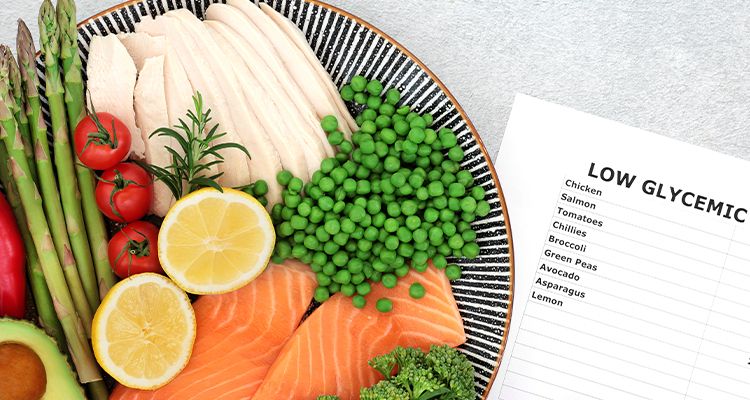EDUCATIONAL CONTENT
Low Glycemic Food Sources
When it comes to diets (a way of eating in order to manage or maintain our weight, as opposed to a chosen diet such as veganism as a lifestyle choice), there are a plethora of options that can cause confusion and overwhelm. There’s the South Beach Diet, the Mediterranean diet, and the Paleo diet. And who could ever forget the Atkins Diet (1.0)?
It’s little wonder that healthy eating can be so difficult to get right.
But one diet, or way of eating, that’s been around for quite a while and looks set to stay is the Low GI, or low glycemic index, diet. Once we understand what the glycemic index is, and how to spot low glycemic food, it can become second nature and may have significant rewards for your weight loss and healthy living goals.
What is the glycemic index?
The glycemic index, or GI, is a food rating system that grades foods based on their carbohydrate content. Or rather, how quickly the carbohydrate content of a particular food affects blood sugar levels.
All carbohydrates are complex chains of molecules, and once we consume them, the body gets to work breaking them down into smaller constituent parts – simple sugars – in order to absorb and use them.
Therefore, bread and pasta, the staple foods for many, are actually just complex forms of sugar. Admittedly, when you eat brown bread and pasta and you’ll also be eating valuable vitamins and minerals. But take in the white, overly processed versions, and you’re eating an awful lot of sugars once they are broken down – and that’s all down to the GI.
A high GI food is a food that contains carbohydrates that are broken down very quickly into sugars that flood the bloodstream. The highest GI food is straight sugar, or glucose, with a GI of 100. Foods such as white bread, pasta, rice, and potatoes are all also high GI foods and are grouped along with other high GI foods such as candies and sugary sodas.
As an example, white bread has a GI of 75 whereas specialty grain bread has a GI of 53.
The importance of low glycemic food
Eating candy is bad for us, we know that. But why?
Eating sugar floods the blood with glucose, leading to a spike in the hormone insulin that regulates how the body stores both the sugar its needs for energy in the liver and fat cells – and the excess sugar it doesn’t need.
When the liver has enough glucose (which it stores as glycogen), it then stores glucose as triglycerides, or in other words, fat.
Consuming a high-sugar, high-GI diet can in this way potentially lead to obesity, but it doesn’t stop there. Sustained consumption could lead to the development of other chronic conditions.
So, in order to maintain our weight and our health, it’s a good idea to consume lower glycemic foods, or at the least pay attention to the GI of your diet.
Low glycemic foods
Lower glycemic foods are, as we mentioned above, whole wheat, and unrefined versions of white carbs, so aim for whole-grain bread, pasta, and brown rice for a healthier option. These however are considered medium GI foods, along with foods such as sweet potatoes, bananas, pumpkins, and squashes.
Low GI foods tend to be food that is low in carbohydrates such as non-starchy vegetables (broccoli, cauliflower, carrots, and salad vegetables) and fruits (including berries, citrus fruits, and apples).
Other low-GI foods that could replace traditional pasta include grains such as quinoa, barley, buckwheat, and couscous. Legumes including beans and chickpeas are all also low-GI foods. As are lean meats, poultry, fish, nuts, seeds, herbs, and spices.
As you can see, there are plenty of choices!
Want to learn more?
If you’re interested in how blood sugar levels affect your overall health, then head to our blog. We dive deep into insulin resistance and metabolic efficiency, detailing everything you want to know from definition to potential solution. Or to learn more about weight management in general – click here for our Ultimate Guide to Weight Management!
